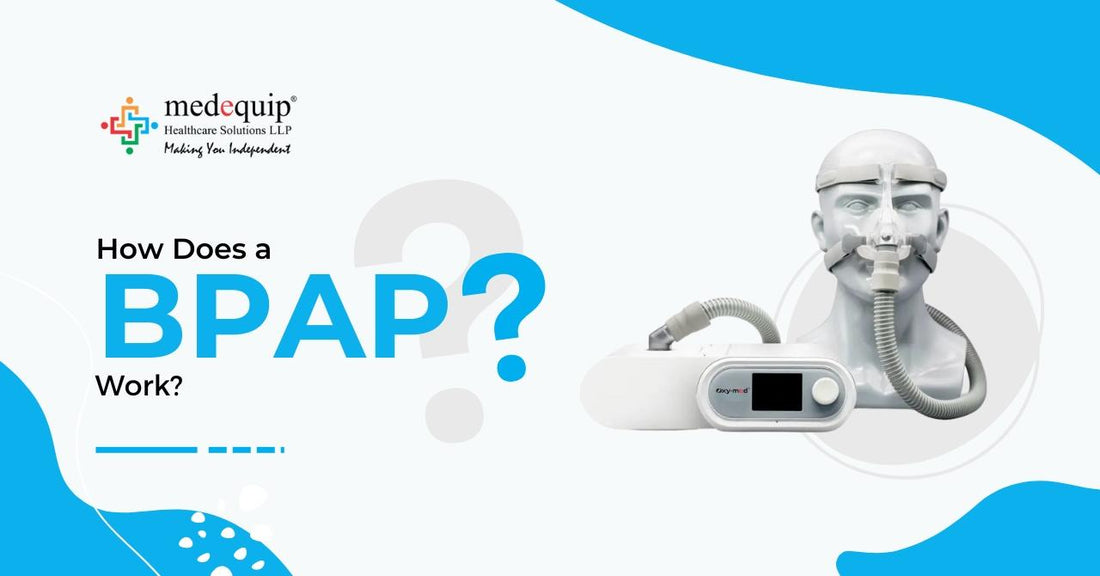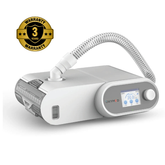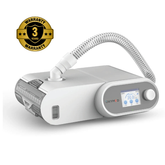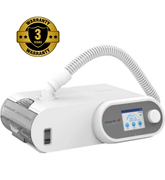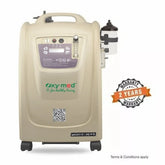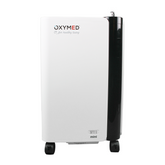How Does a BPAP Work
What Is a BPAP Machine and What Does It Do?
BPAP machines, like other ventilators, employ pressure to force air into your lungs. Depending on the settings, this opens the lungs and raises the blood oxygen level.
Breathing problems can have a negative impact on your quality of life. Fortunately, a range of equipment can assist you in breathing more easily.
CPAP and APAP devices are well-known, but there are also bilevel-positive airway pressure (BiPAP) machines. The term "BiPAP" refers to a device brand, whereas BiPAP refers to the type of device.
We'll look at BiPAP machines, how they function, and what to expect if you use one in this post.
What’s a BiPAP machine, and how does BPAP work?
A BiPAP is a type of non-invasive ventilation (NIV) therapy used to help people breathe.
-
BiPAP machines can be used in hospitals and at home for those requiring them.
Home BiPAP devices are small, around the size of a toaster. A tube links the machine to a mask worn over your nose and mouth.
BiPAP devices, like other ventilators, employ pressure to force air into your lungs. Depending on the setting, this expands the lungs, increasing blood oxygen levels and decreasing carbon dioxide.
These machines are called “bilevel” because they have two air pressure settings:
-
When you breathe in, BiPAP machines deliver more air pressure. This is also known as inspiratory positive airway pressure (IPAP).
-
When you breathe out, the machine reduces the air pressure. This is called expiratory positive airway pressure (EPAP).
Some BiPAP machines have a timer that can be programmed to maintain a certain number of breaths per minute.
What’s a BiPAP machine used for?
At-home BIPAP machines can be used to treat medical disorders that make breathing difficult. It may be beneficial for the following conditions:
-
Chronic obstructive pulmonary disorder (COPD)
-
Obesity hypoventilation syndrome (OHS)
-
Obstructive sleep apnea
-
Central sleep apnea
-
Amyotrophic lateral sclerosis (ALS)
BiPAP machines may be used in hospitals to treat breathing emergencies. Because they’re non-invasive, they’re often a preferable treatment to intubation.
What to Expect When Using a BiPAP Machine
If you are prescribed a BiPAP machine, a respiratory specialist will usually set it up for you. The machine must be calibrated and the parameters modified in accordance with your treatment plan.
Your healthcare professional will help you understand what to expect and how to use your BiPAP machine correctly at home.
Depending on the condition, you may be requested to use it all the time, a portion of the time, or only when you sleep. You must follow these directions and use them as directed by your doctor or healthcare professional.
A BIPAP machine consists of a tabletop device with a motor, tubing, and a mask. You should be familiar with all the components and how they fit together and function. The machine will include detailed instructions on how to clean the mask and tubing.
A BIPAP machine may be painful to operate at first. You'll likely grow accustomed to wearing the mask and the machine's airflow over time. If you don't, contact your healthcare professional to see if the settings can be changed or if another choice could be better for you.
BiPAP machines aren’t loud, but the sound may take some time. You may want to consider wearing earplugs if the machine disrupts your sleep.
BiPAP machine side effects
BPAP machines are fairly safe and pose a low risk of side effects. Most side effects are mild. They may include:
-
bloating
-
general discomfort
-
mouth dryness
-
nasal dryness
-
runny nose
-
sinus pressure
-
skin irritation from the mask
conclusion
A BPAP machine is a type of ventilator used to treat chronic breathing disorders.
It works similarly to a CPAP machine, however, unlike a CPAP, which provides continuous air pressure, a BPAP provides two air pressure levels.
People with specific types of sleep apnea, COPD, obesity-hypoventilation syndrome, and neurological diseases that impact breathing, such as ALS, are often advised to use a BPAP machine.
Related Products
-
Auto BPAP - AirSmartThe Oxymed Auto BPAP - AirSmart Machine is an advanced breathing support device designed for individuals looking for non-invasive respiratory wellness tools. Built with smart technology, ease of use, and a user-friendly interface, it offers customizable airflow and comfort features suitable for home use...
- ₹ 37,100.00
₹ 71,990.00- ₹ 37,100.00
- Unit price
- / per
-
BPAP ST / 30 - AirSmartThe Oxymed BPAP ST / 30 - AirSmart Machine is a compact, feature-rich respiratory support device designed for individuals seeking non-invasive breathing assistance as part of their wellness routine under professional guidance. With a German-engineered turbine and user-friendly controls, it supports multiple modes and...
- ₹ 45,000.00
₹ 84,990.00- ₹ 45,000.00
- Unit price
- / per
-
Auto CPAP - Sleep EasyThe Oxymed Auto CPAP - Sleep Easy Machine is a user-focused breathing support device designed to promote consistent airflow during rest. Combining smart features with ease of use, it supports a more restful breathing experience. The device auto-adjusts airflow based on user patterns, making...
- ₹ 31,900.00
₹ 60,990.00- ₹ 31,900.00
- Unit price
- / per
-
Oxygen Concentrator Mini - 10 LtrThe Oxymed Oxygen Concentrator Mini - 10 Ltr is a powerful, efficient, and medical-grade oxygen delivery solution designed for individuals requiring high-flow oxygen therapy. Engineered with advanced technology, this device ensures a steady and uninterrupted supply of oxygen, making it ideal for home and...
- ₹ 52,000.00
₹ 118,990.00- ₹ 52,000.00
- Unit price
- / per
-
Oxygen Concentrator Mini - 5 LPMThe Oxymed Oxygen Concentrator Mini - 5 LPM is a compact and easy-to-use oxygen delivery system designed for general wellness applications in home environments. With a flow capacity of up to 5 litres per minute, it provides adjustable oxygen enrichment for personal use. Its...
- ₹ 36,900.00
₹ 65,990.00- ₹ 36,900.00
- Unit price
- / per
-
Portable Oxygen Concentrator P2The Oxymed Battery-Powered Portable Oxygen Concentrator P2 is a lightweight, travel-friendly device designed for individuals who need oxygen therapy on the go. With pulse dose technology, it provides efficient oxygen delivery while ensuring maximum mobility. Whether at home, traveling, or outdoors, this concentrator offers uninterrupted...
- ₹ 137,900.00
₹ 219,990.00- ₹ 137,900.00
- Unit price
- / per
-
Hepa NebulizerThe Oxymed HEPA Nebulizer is a high-performance respiratory device designed to provide effective treatment for respiratory conditions such as asthma, chronic obstructive pulmonary disease (COPD), and other pulmonary diseases. Featuring advanced HEPA filtration, this nebulizer ensures the delivery of clean, purified air during treatments,...
- ₹ 1,980.00
₹ 2,200.00- ₹ 1,980.00
- Unit price
- / per

